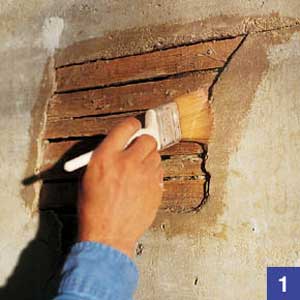
Plastering is quite a craft. Older plaster jobs consist of three coats of material applied over wood or metal lath. Some old plaster (Victorian homes come to mind) is a little on the crumbly side. If you’re careful cutting through it, you’ll keep your repairs to a minimum.
To cut through plaster …
- Determine the location of your new box (next to a stud if possible, but do your initial cutting at least a few inches away to make sure nothing gets in the way of the saw blade).
- Place a drop cloth or a piece of plastic on the floor.
- Drill a test hole so you can determine where the edge of the stud is located. (Ignore this if you’re not going to be near a stud.)
- Place the front of your new box against the plaster, and use a pencil to draw around it (ignoring any plaster ears) to give you a line to cut into. You can apply masking tape around the outline to help keep the plaster from chipping when you cut.
- Drill a hole in each corner to provide starter locations for the keyhole saw or scroll blade.
- Hold a straightedge against the pencil lines, and score the plaster several times with a sharp blade.
- Carefully saw through the lath in smooth movements. Go through about 7/8 of the way on one side and then cut the other side completely, returning to cut the remainder of the first side. This prevents the lath from excessively shaking the plaster.

No comments:
Post a Comment